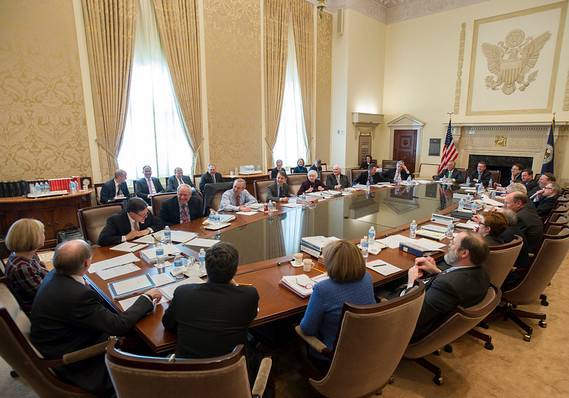Framing Fed Chair Yellen’s Testimony and Interpreting Fed Speak

Please note that we are not authorised to provide any investment advice. The content on this page is for information purposes only.
Testimony by Federal Reserve Chair Yellen is one of this week’s few highlights. Yellen’s testimony is not about articulating a new policy, but explaining the existing policy to US Congress, and to some extent, the American people.
Testimony by Federal Reserve Chair Yellen is one of this week’s few highlights. Yellen’s testimony is not about articulating a new policy, but explaining the existing policy to US Congress, and to some extent, the American people.
The key point is that monetary policy is in transition. The asset purchases have stopped, though the maturing issues continued to be reinvested. The Federal Reserve is preparing the market for a rate hike. Though it has not indicated when, it has thus far used word clues to indicate that it will not happen in March or April. We expect Yellen not to say anything that will rule out a June hike.
Yellen will likely make four important points for investors. First, the decline in measured inflation due to the drop in energy prices will be transitory. This means de-emphasizing low inflation readings. Second, she will point to the fact that unemployment continues to fall faster than the Federal Reserve anticipated. There is still scope for additional cyclical improvement. Third, the Fed is demonstrating its patience. Fourth, expect Yellen to defend the Fed’s record and seek to blunt a legislative encroachment of the central bank’s independence.
The Federal Reserve will not raise rates at the March 17-18 FOMC meeting. Nevertheless, it will provide significant insight into the timing of its first rate hike since the Great Financial Crisis. All the crunching of the economic entrails and the hours of analysis comes down to a single word: patience.
The Fed uses its statements to guide investor expectations as economic conditions evolve. Previously the Fed had indicated there would be a “considerable period” between the end of its asset purchase program (QE3) and the first rate hike. Last December, the Fed statement introduced the concept of “patience” before raising rates.
Pressing the Chair of the Federal Reserve Janet Yellen to define what patience meant, she ultimately settled on a “couple” as in two meetings. Given that there are two meetings a quarter, the use of the forward guidance in December signaled no rate hike in Q1 15.
To repeat that forward guidance in March, investors will understand that to signal there will not be a hike at the June FOMC meeting. Given the comments by numerous Fed officials that have purposefully made it clear that a June hike was a real possibility, we look for the Federal Reserve to modify its forward guidance in March. This means dropping or diluting the word “patience”.
There are three general reasons why a rate hike in the middle of the year remains the most likely scenario:
First, the economy no longer requires the emergency monetary setting that was indeed necessary to prevent greater crisis. The economy grew at its fastest rate in a decade in the April-September 2014 period and appears to be slowing into the trend pace (growth in the work force plus productivity). Although the overall economy slowed in Q4 14, consumption rose by 4.3%; the strongest since Q1 2006, achieved with minimal use of credit cards. In the three months ending in January, the US economy created more than a million jobs, the most in 20 years.
Second, the Federal Reserve is following a course that proved successful with tapering and speaks to transparency and credibility. It shared with investors that it was considering tapering. It provided a general timeframe, allowing investors to adjust accordingly. It then did what it said it would. As it executed its strategy, short-run noise did not distract it, like the fact that the US economy contracted in Q1 14. In a similar vein, the Federal Reserve is preparing investors for a mid-year rate hike.
Third, overnight (Fed funds) interest rates are near zero, compromising conventional policy tools. In order to reactivate it, there needs to be scope to provide stimulus. Some may dismiss this as having to raise rates to cut them, but it does not do justice the need and desire to for the central bank to have conventional policy options.
It is true that inflation is lower than the Fed’s target. However, unlike the other major central banks, the Federal Reserve’s inflation target excludes energy and food, but includes housing. The ECB targets the headline inflation, and its core measure excludes housing costs. The Bank of Japan targets core inflation that excludes fresh food prices (and for now, last April’s sales tax increase). Fed officials have emphasized the transitory nature of the energy-induced decline in inflation, which has some knock-on effects on core prices.
The dollar’s appreciation also does not pose a significant hurdle to the Fed adjusting US monetary policy. The decline in the US bond yields and the drop in oil prices offset the headwind posed by the stronger dollar. In addition, the Federal Reserve has noted that external trade accounts for a small part of the overall economy, and the effect of the dollar’s appreciation on exports is modest.
If the March FOMC statement fails to drop the word “patience”, the US dollar will likely sell-off, boosting equities and emerging markets. It would signal that, barring a new significant development, there would not be a rate hike in the second quarter.
We expect that the word “patience” will either replaced or sufficiently neutered to keep investors on notice for a mid-year hike. In the context of the ECB embarking on its more aggressive asset purchase plan and the BOJ continues its program, the divergence favors the US dollar.
The Context for Yellen is republished with permission from Marc to Market




